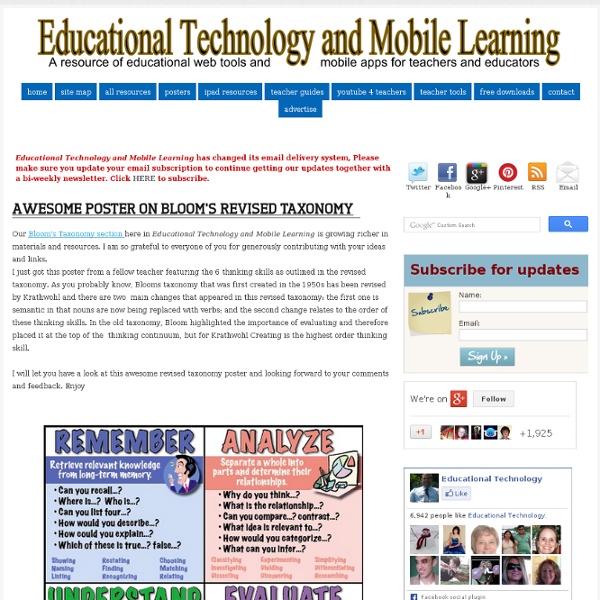Awesome Poster on Bloom's Revised Taxonomy
Our Bloom's Taxonomy section here in Educational Technology and Mobile Learning is growing richer in materials and resources. I am so grateful to everyone of you for generously contributing with your ideas and links. I just got this poster from a fellow teacher featuring the 6 thinking skills as outlined in the revised taxonomy. As you probably know, Blooms taxonomy that was first created in the 1950s has been revised by Krathwohl and there are two main changes that appeared in this revised taxonomy: the first one is semantic in that nouns are now being replaced with verbs; and the second change relates to the order of these thinking skills. I will let you have a look at this awesome revised taxonomy poster and looking forward to your comments and feedback.
Blooms, SAMR & the 3 C's - iSupport
All the apps you’ll ever need As I prepared for an upcoming presentation at a local University I unloaded my test iPad of all its applications and created a new iPad, complete only with apps which I use at school every week. This iPad would become my “essentials” iPad, strategically and efficiently full of apps I wholly recommend to every educator I meet. I went through the apps and I developed a list, indicating the apps purpose. I found that these purposes consistently fell into 3 categories: Consumption, Creation and Collaboration. I found I had many educational gaming type apps (gamification of learning) which fitted into the Consumption category. Today I chose to focus on these 3 “C’s” activities, and it was clear that they could be easily aligned to Blooms Taxonomy objectives. When you are considering your teaching tool kit, consider a concise balance between these apps. Which apps are you consuming (researching, learning specific facts) with?
Related:
Related:



